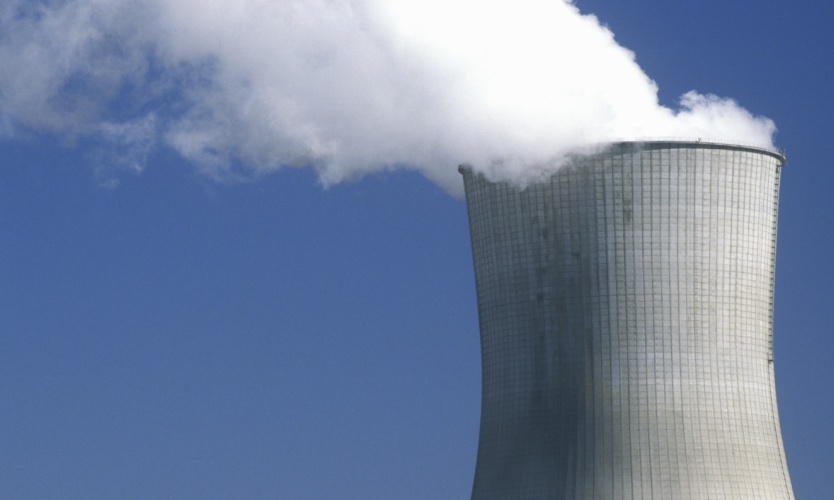Data centers fuel demand for nuclear sites, coverage needs
- July 17, 2025
- Posted by: Web workers
- Category: Finance

Rising energy needs from the technology sector, where power-sapping data centers are proliferating, and other industries are creating a demand for additional generation facilities, at least some of which may be nuclear.
A new breed of reactor design and expedited regulatory reform may help usher in a new era for nuclear energy in the U.S., which could trigger increased demand for specialty insurance coverage, observers say.
“There has been an increase in client engagement, reflecting a global resurgence in nuclear energy development,” Charles Philpott, Houston-based global natural resources leader at Aon, said in an email.
Liability coverage for nuclear facilities is mandated by law. The Price-Anderson Act, passed by Congress in 1957, established accident liability limits for the industry, and the liability limit is set at the maximum insurance available.
That limit stands at $500 million, according to Daniel DeMerchant, Glastonbury, Connecticut-based vice president, claims and general counsel for American Nuclear Insurers, a 21-member U.S. underwriting association that provides liability coverage for nuclear power generation.
ANI’s 21 members account for 66% of the association’s capacity, and the remainder comes from global reinsurers, Mr. DeMerchant said. The review and binding process can take months, so he advises contacting a broker with nuclear experience early in any project’s timeline.
The association’s insurance forms are approved by the U.S. Nuclear Regulatory Commission and provide continuous coverage “until canceled or terminated,” Mr. DeMerchant said.
ANI member Axa XL divides nuclear risks into “cold” and “hot,” the latter encompassing any radiological risks, which are insured through the pool. Axa XL reinsures the ANI pool, said Katherine Gerber, Richmond, Virginia-based head of energy and energy transition, Americas, for the insurer.
The “cold” risks, such as construction, are insured via traditional property/casualty markets but get additional underwriting scrutiny because of the proximity to nuclear operations, she said.
New technology and reactor designs are helping drive activity.
“There’s a lot of interest” in nuclear power generation, including in a new type called small modular reactors, said Mike Hogue, Oklahoma City-based managing director energy, power utilities and renewables for Arthur J. Gallagher & Co.
“We’re seeing a growing interest in the construction of new nuclear-generating assets,” including small modular reactors, said Everett Hansen, Milwaukee-based vice president and U.S. nuclear energy leader at Marsh.
Such reactors can be built much more quickly than “legacy” reactors, Mr. Hogue said.
ANI has formed a technology working group to engage with companies involved in the emerging generation of reactor designs, Mr. DeMerchant said. The association’s existing forms are broad enough to provide coverage for newer technologies and reactor designs, he said.
While nuclear reactors have typically been owned and operated by utilities, future facilities may serve emerging needs such as technology companies, with various ownership arrangements under consideration.
“They need to be very strategic about how they are sourcing energy, because their businesses are steadily expanding,” Mr. Hansen said.
Data centers can use a lot of energy, he said.
“You have an energy-dense process that might be well- coupled with an energy-dense means of production,” Mr. Hansen said.
Even though SMRs are smaller than legacy reactors, they are still multi-million- and billion-dollar facilities, Mr. Hogue said.
“They’re big investments. They require construction risk insurance; they will require operational property insurance; there’s obviously the nuclear component of it as well,” Mr. Hogue said.
Momentum for new nuclear power generation also could benefit from a series of executive orders President Donald Trump issued in May.
“In the U.S., recent policy initiatives, including four executive orders, have incentivized investment in the nuclear fuel cycle,” Mr. Philpott of Aon said via email.
“The current administration is clearly behind nuclear and we are seeing a lot of activities in the space,” Mr. Hogue said.
One executive order, “Deploying Advanced Nuclear Reactor Technologies for National Security,” says “The Federal government must utilize its full authority to accelerate the secure and responsible development, demonstration, deployment, and export of United States-designed advanced nuclear.”
Another order charges the NRC with reforming its structure and modernizing its regulations within 18 months, with the goal of streamlining the approval of new licenses.



